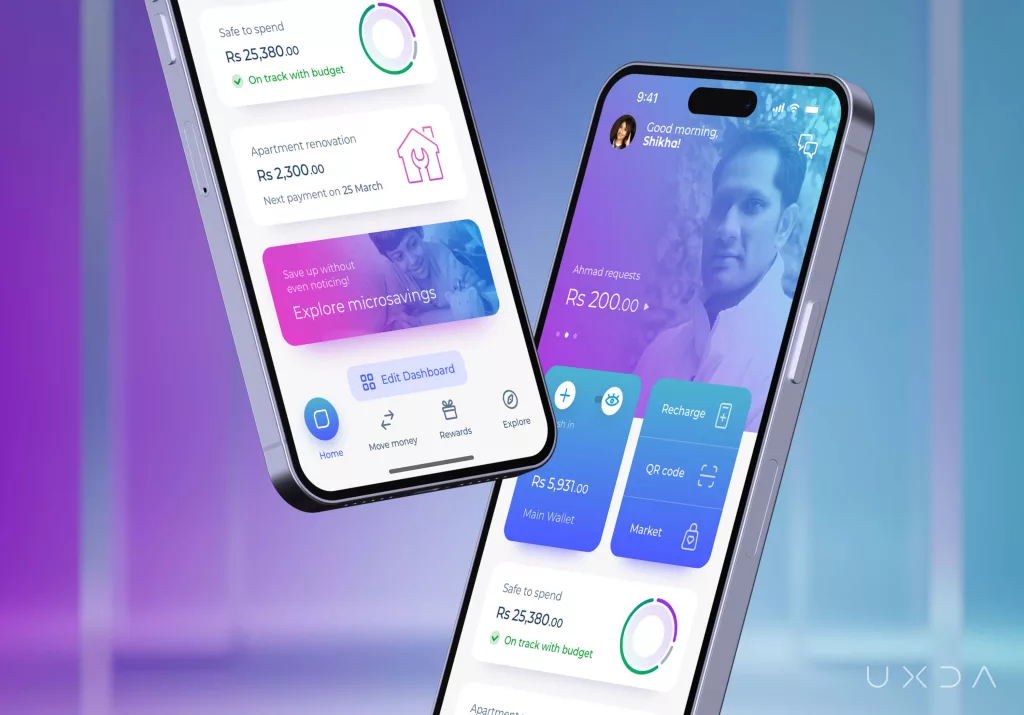This guide explores the best practices for designing frictionless Open Banking experiences—helping businesses design faster, comply effortlessly, and convert more users.
Understanding Open Banking UX Challenges

While Open Banking enables greater financial transparency, it also introduces key UX challenges that can impact user adoption and retention.
#1 Regulatory Compliance and Security Concerns
Open Banking in Australia is regulated under the Consumer Data Right (CDR) framework, which mandates strict data security and consumer consent policies. According to a study, 65% of Australians have concerns about data privacy in financial services, with many hesitant to share their financial data with third parties (Source: YouGov, 2023).
#2 User Trust and Transparency
54% of Australians say they would be more likely to use Open Banking if they had full control over what data is shared and with whom (Source: FDATA, 2023). However, many users are unfamiliar with Open Banking, making trust-building a top priority through clear messaging, transparency in data handling, and easy-to-understand consent forms.
#3 Seamless Third-Party Integrations
Australian banks and fintech companies must support secure, real-time API integrations with third-party services. Poorly integrated APIs can result in slow response times, data retrieval errors, and broken user experiences, ultimately affecting trust and conversion rates.
Open Banking UX Best Practices

To increase adoption, conversion, and retention, Open Banking services in Australia should prioritize frictionless experiences, security reassurance, and intuitive design.
#1 Simplify Onboarding & Authentication
The average banking app conversion rate is 20-30% in Australia, but a complex onboarding process can reduce this to under 10% (Source: Finder, 2023).
Best practices for onboarding include:
- Use progressive onboarding, where users can explore basic features before completing full registration.
- Implement biometric authentication (fingerprint/Face ID) to speed up logins.
- Reduce form fields to only essential information, keeping it under 5 input fields to improve sign-up rates.
#2 Transparent Data Permissions & Consent Management
70% of Australian users want clearer explanations of how their data will be used before they grant consent (Source: Deloitte, 2023).
To boost trust and conversion, UX design should:
- Provide visual indicators (icons, tooltips) explaining what data is shared.
- Allow users to customize permissions instead of using pre-checked options.
- Offer a dashboard where users can review and revoke consent at any time.
#3 Optimize API UX for Developers
Fintech adoption in Australia grew by 35% in 2023, largely driven by seamless API integrations (Source: FinTech Australia, 2023).
To enhance API UX, developers should:
- Ensure APIs are well-documented with sandbox environments for testing.
- Minimize response times to under 500ms for real-time financial data access.
- Implement error handling UX (e.g., user-friendly messages for API failures).
#4 Build Trust Through Security UX
One in three Australians worries about Open Banking fraud (Source: ACCC, 2023).
Security UX should focus on:
- Multi-layer authentication (e.g., SMS OTP + biometric login).
- Real-time fraud alerts displayed with intuitive UI.
- Security reassurance messages, such as “Your data is encrypted with bank-grade security.”
#5 Create a Consistent & Intuitive User Flow
80% of users abandon transactions if they encounter a confusing UI (Source: UX Research Australia, 2023).
Open Banking apps should:
- Maintain a predictable flow (no unexpected redirects).
- Use pre-filled fields where possible (e.g., automatically detect bank details).
- Provide progress indicators to keep users informed of multi-step processes.
#6 Enhance Financial Data Visualization
Users retain 70% more financial insights when presented visually (Source: Nielsen, 2023).
Best practices include:
- Using interactive charts for transaction analysis.
- Providing color-coded spending categories to improve understanding.
- Implementing real-time budget tracking features.
#7 Leverage Personalization & Smart Recommendations
56% of Australians want AI-driven financial recommendations (Source: FinTech Australia, 2023).
Personalization can be achieved through:
- Adaptive dashboards based on user behavior.
- Predictive insights (e.g., “You’re on track to save $500 this month”).
- Customized product recommendations (e.g., tailored loan offers based on spending patterns).
Elevate Your Open Banking UX with CMC Global
Creating a seamless and secure Open Banking experience requires a deep understanding of user behavior, regulatory compliance, and technology integration. By prioritizing trust, transparency, and efficiency, businesses can accelerate user adoption and maximize conversions.
Recognized as the Best IT Services Provider at the Globee Awards, CMC Global specialize in delivering best-in-class IT solutions that empower financial institutions to design faster, comply effortlessly, and enhance user experiences. With our proven expertise in API integrations, data security, and financial technology, we help businesses navigate the complexities of Open Banking with confidence.
Connect with us today to transform your Open Banking UX and drive business success.




